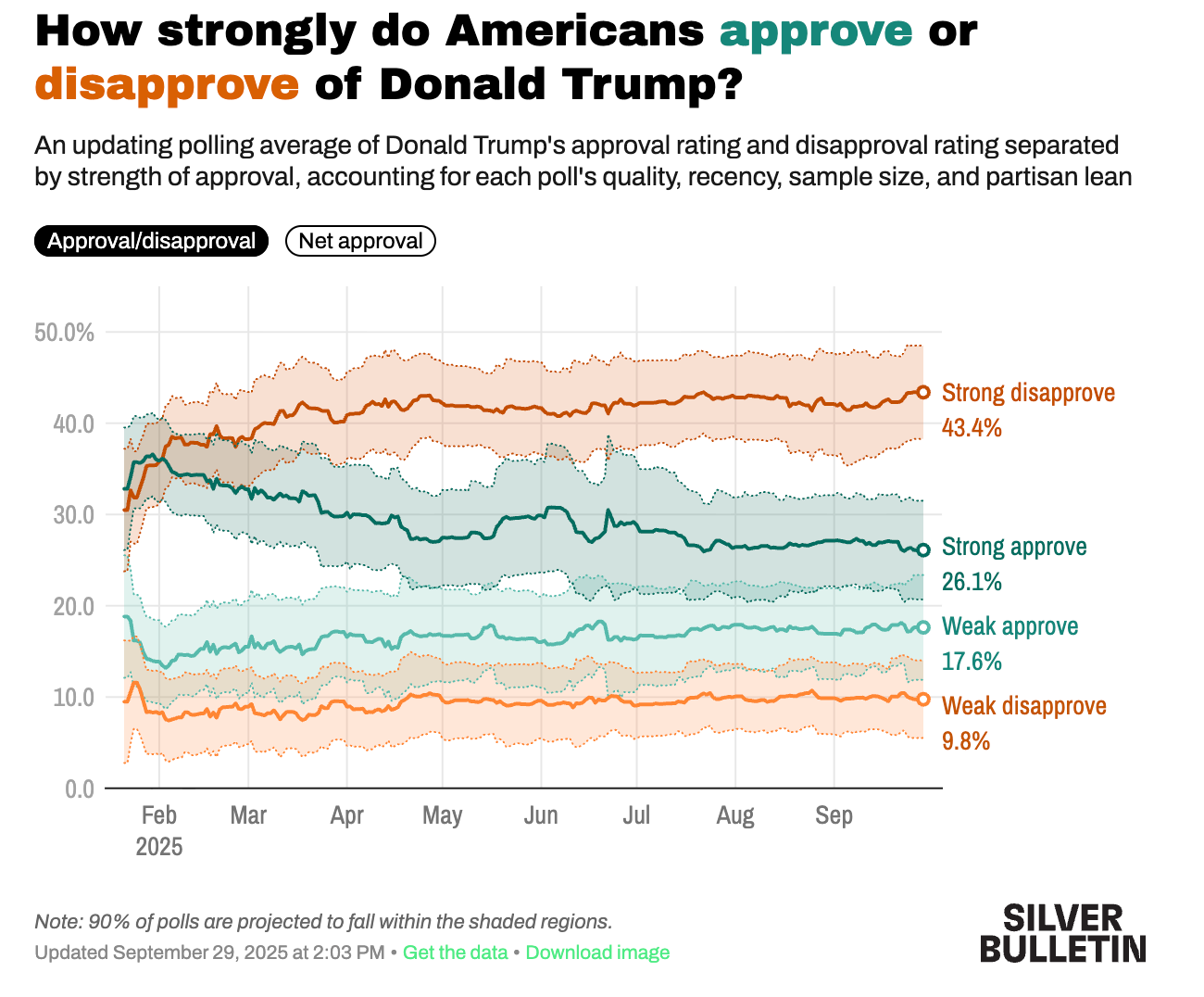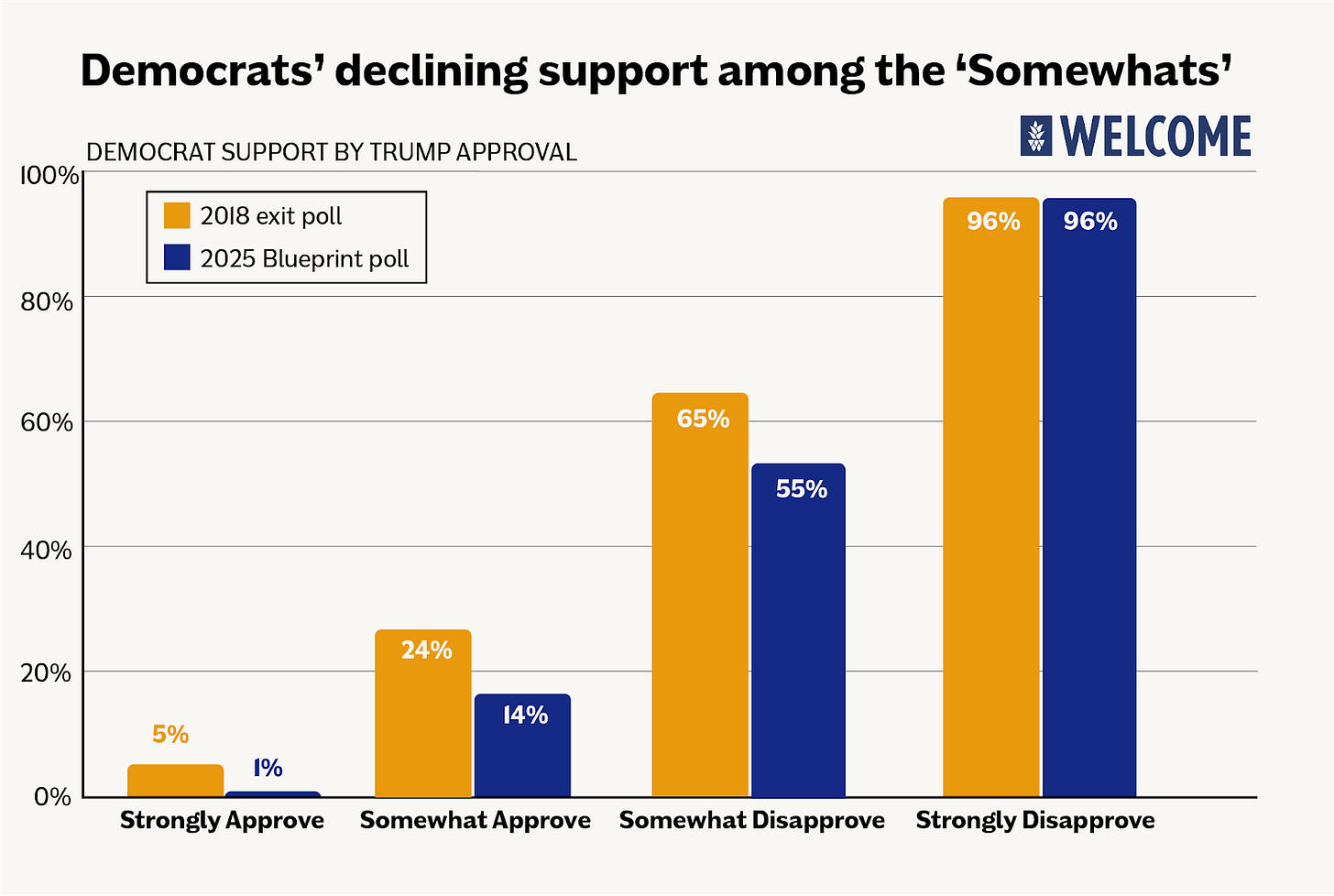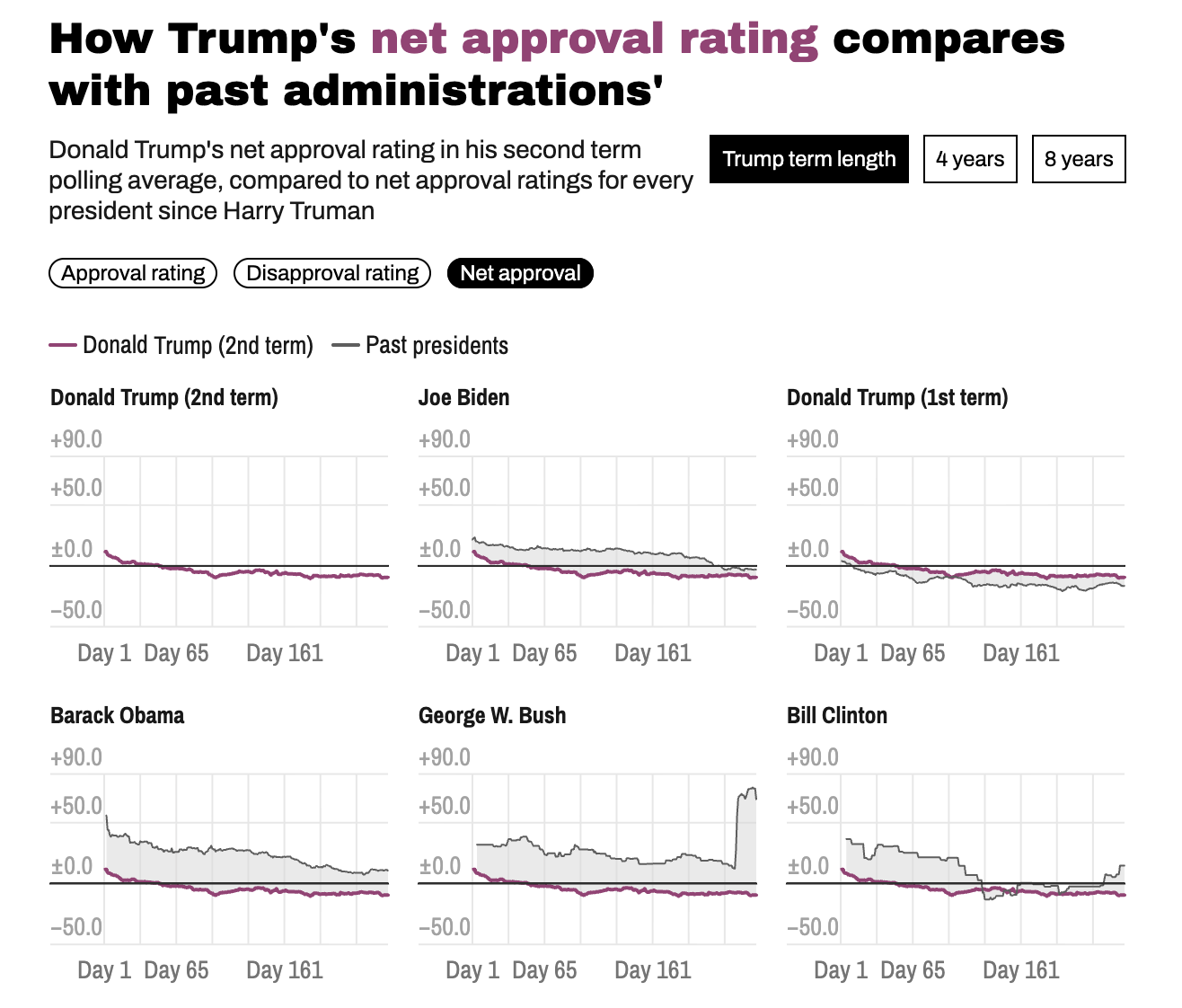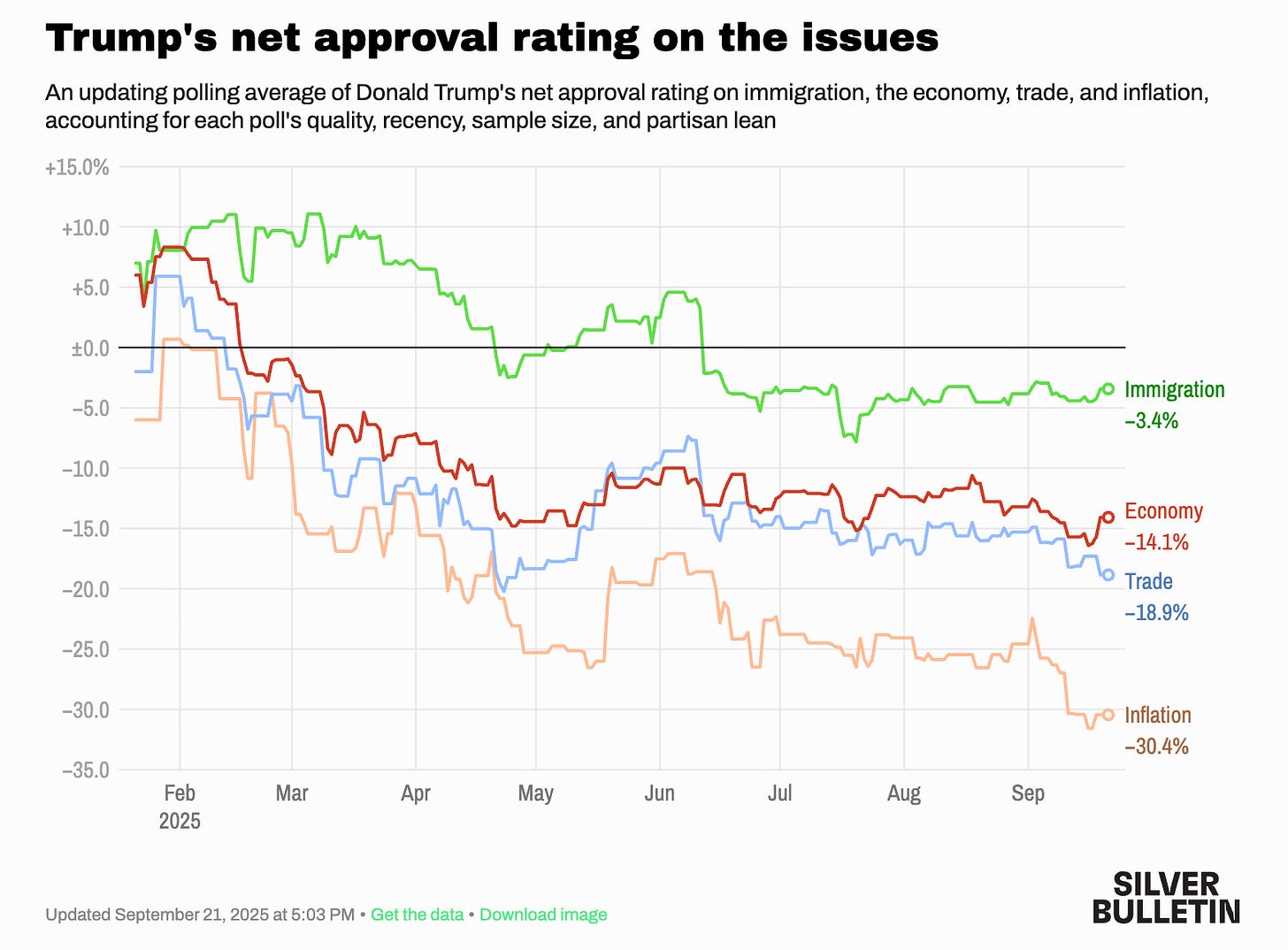Checking In On The "Somewhats"
Democrats have lost ground with those who "somewhat" disapprove of Trump. That could cost them in the midterms.
Last year, my colleague Lauren Harper Pope wrote a piece about the “Somewhats,” the voters who “somewhat” approved of Trump. Lauren argued that winning the election would require winning over these voters.
With Trump fully into the swing of his second term, let’s revisit the Somewhats and why they will define the midterm election next year.
The “Somewhat” Situation
If Democrats win “Somewhats,” they win the midterms. In 2018, according to exit polls, Democrats won 24% of the 14% of voters who somewhat approved of Trump and 63% of the 8% of those who somewhat disapproved of Trump. That was enough to create a “wave” midterm election and win a whopping 41 seats.
Heading into the 2026 midterms, “somewhat approve” voters have grown from 14% to 28% of the electorate. To win, Democrats need to maintain or improve on their 24% share of these voters.
Most pollsters don’t break down the generic ballot by approval ratings, so it’s hard to get a sense of progress. However, our friends at Blueprint shared with us a poll they fielded from September 19 to September 24 that crosstabulated Democratic generic ballot share by Trump approval.
The results are worrying and displayed below. While Democrats have maintained their margin (96%) with strong disapprovers, they have gone from winning 65% of those who somewhat disapprove of his performance to 55%. And with the growing share of those who “somewhat” approve of Trump, Democrats have gone from winning a fourth to winning only 14%. The challenge for Democrats is not winning the “strongly disapprove” cohort; they need to return to 2018 margins with those who “somewhat” approve or disapprove of Trump.
Evan Roth Smith, who leads polling for Blueprint, told us,
While Donald Trump’s approval rating is underwater, especially with independent voters, it has not hurt congressional Republicans’ standing in the generic ballot to the same extent as in Trump’s first term. 45% of voters who somewhat disapprove of Trump still plan to vote for a Republican in 2026, a share that stood at just 34% in 2018. And while 24% of voters who somewhat approved of Trump in 2018 nevertheless voted for a Democrat in those midterms, that figure currently stands at just 14%, ten points lower. In short, Democrats today are failing to convert sentiment around Trump into Congressional gains at the same rate they did in 2018, when the midterms delivered a Blue Wave in a rebuke to the President. That rebuke may not come as easily this time.
It’s a phenomenon we discussed here: it’s not enough for Trump to fail, Democrats must present a better vision.
There’s another warning sign for Democrats - Trump’s approval remains definitively (though only narrowly) above his first term approval rating. This means that there are fewer “somewhat disapproves” for Democrats to win, and they are winning fewer of them.
Don’t Change The Topic: Trump’s Support Is Waning the Most On The Economy
So how do Democrats win the Somewhats? Focus on the economic issues where Trump’s approval has soured the most. On immigration, voters are still skeptical that Democrats have a better plan. But on tariffs, prices, and the economy, Trump is weak.
The problem Democrats face is that their “base” is itching for a fight. But Democrats already have the margins they need with their base of “strong” disapprovers. The question now is how to win the Somewhats. Recent New York Times polling suggests that a shutdown won’t work: Only 32% of Independents support a shutdown. Perhaps surprisingly, only 47% of Democrats support the shutdown (suggesting it is not actually a priority of the “base”).
To win Somewhats, Democrats need to emphasize prices, tariffs, and healthcare — the things that concern independent voters.








What is the simple, effective message that we can all repeat and embrace to motivate the "somewhats," moderate Republicans, and former democrats to join the Democrats and reject Trump and MAGA extremism?
If we can get it as simple as “It’s the economy, Stupid” -- and find the discipline to execute -- that’s great.
But in reality, we need a winning argument with no more than three big ideas that are simple, straightforward and persuasive, all in a single page.
The Democrats don’t have any kind of clear message like this that is instilling confidence and gaining momentum. If I’m wrong, someone please tell me what it is!
This is a serious issue. Trump’s base of power is his popularity. If the moderates in America stand up to him, his power will dramatically erode. He is literally breaking the law to starve American children so he can tear health insurance away from tens of millions of Americans. This week.
It’s time to compete for the persuadable voters, Democrats.